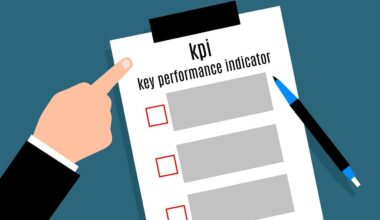How to Integrate Pinterest with Your Overall SEO Strategy
Pinterest serves as a powerful visual search engine, facilitating connections between ideas and inspiration. By integrating Pinterest into your overall SEO strategy, you can take advantage of its unique features to drive organic traffic to your site. To achieve optimal results, begin by creating a business account, as this provides valuable analytics and access to enhanced tools. Design visually appealing pins that represent your brand while including target keywords in the descriptions. This helps users discover your pins through Pinterest search engines. Ensure your content is optimized for mobile devices, as a significant portion of users access Pinterest through smartphones.
Crafting engaging pins is essential for capturing audience attention. Use vibrant images and compelling text overlays, combined with keyword-rich descriptions. Incorporate relevant hashtags to enhance your discoverability on Pinterest. Consider the overall aesthetics of your boards and align them with your brand messaging. Organizing your pins into categorized boards aids in improving the user experience, making it easier for visitors to navigate your content. This organization encourages users to save and share your pins, expanding your reach significantly. Regularly update your boards with fresh content to keep users engaged and returning for more inspiration. This strategy creates a loyal following, increasing your brand awareness.
Keyword Research for Pinterest
Effective keyword research is a vital part of integrating Pinterest with your SEO strategy. Use Pinterest’s search function to identify trending keywords related to your niche. Observing what others in your field use can give you insights into the keywords that resonate with your target audience. Use tools like Google Keyword Planner and Pinterest Trends to analyze search volumes and understand what related topics prospective customers are interested in. Aim to compile a list of about 20 to 30 key terms that can seamlessly fit into your content. This targeted approach will enhance your visibility in search results on Pinterest, drawing in more traffic.
Once your keywords are identified, strategically place them in your pin descriptions, titles, and board names. Optimizing your profile with keywords also plays a crucial role, as Pinterest’s algorithm favors profiles with keyword-rich content. Additionally, don’t forget to link your pins back to your website or blog, creating a smooth transition for potential customers. This practice encourages users to explore your offerings further, increasing the likelihood of conversion. Using call-to-action phrases or questions in your pin descriptions can also stimulate engagement. Encourage users to repin your content or visit your site for more information, enhancing your SEO results.
Utilizing Rich Pins
Rich pins are an often-overlooked opportunity for integrating Pinterest into your SEO strategy. These pins allow you to provide users with more context about your content by including extra information directly on the pin. There are several types of rich pins: app, product, and article pins. To use them effectively, ensure that your website is correctly set up for rich pins, which can significantly enhance your click-through rates. For example, product pins display real-time pricing, availability, and product descriptions, enticing users to click and learn more. This enhances user experience and improves your SEO standing.
Visual storytelling is highly effective on Pinterest, and using rich pins can elevate this approach. Create eye-catching visuals that tell a story, while conceptually coupling your images with rich, descriptive text. Engaging visuals combined with rich pins can establish a deeper connection with your audience. These connections may lead to increased repins, which positively influences your brand’s visibility and overall engagement metrics. When users repin your content, it spreads your brand organically throughout the platform, allowing new users to discover your offerings. Remember, a well-structured Pinterest strategy can amplify your overall SEO efforts while creating a visually engaging experience.
Post Regularly and at Optimal Times
The frequency and timing of your posts can significantly affect your Pinterest SEO strategy’s effectiveness. Regular posting keeps your audience engaged and feeds the Pinterest algorithm. Consistency is key, as it helps to establish your presence on the platform. Utilize scheduling tools like Tailwind to automate this process, ensuring your content is shared during peak times when your target audience is most active. Analyzing your Pinterest analytics can provide insights into the optimal times for posting. This way, you can maximize the visibility and engagement of your pins, driving more traffic to your site.
Another essential factor is to diversify the type of content you share. This can include infographics, blog posts, videos, or tutorials, catering to the varied preferences of Pinterest users. Experimenting with different content types can also enhance engagement rates. Engage with followers through comments and collaborations, encouraging further interaction. User engagement not only provides insights into your audience’s needs and preferences but also enhances the likelihood of your content being seen. Ultimately, a robust Pinterest strategy enhances your overall SEO efforts, translating into increased brand awareness and elevated traffic levels.


